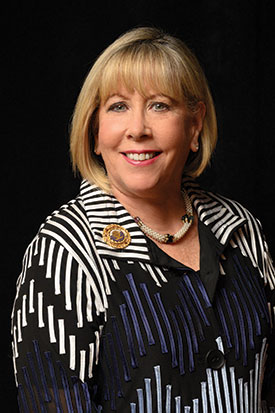Hadassah
President's Column
Once Shattered and Scattered

Hadassah National President
Can something routine also be miraculous? And can a small action or incident, however miraculous, be the tip of a larger miracle? These are not questions we ask ourselves every day. We may not think of them at all until we have a flash of insight.
This meditation begins with an accident. On what he described as a “twisty, turny type of road” near Beit Shemesh, Zach Weissman’s motorcycle crashed into a guardrail. “I flew up, did a whole 360 and landed on my back,” he recalls. His leg was shattered and he left a piece of his tibia by the roadside. An ambulance took him to Hadassah Hospital Ein Kerem, where orthopedic surgeon Dr. Vladimir Goldman put his leg back together.
The initial prognosis had included the grim possibility of amputation followed by chronic pain, “a very realistic scenario for trauma cases with compound fractures and bone deficiencies,” Dr. Goldman explained. Nonetheless, within five months of his surgery, and after rigorous physical therapy, Weissman walked on his own two legs, without crutches.
Our medical staff performs nearly 100,000 surgeries in a typical year and treats one million patients. Weissman’s experience was surely dramatic, yet it exists in a broad universe of personal and medical drama that takes place within our walls.
But when I look at this one story, I also see something larger. I see a patient who was born in Jerusalem to parents from California. I see a doctor who was born in Leningrad, moved to Israel in his youth and studied medicine at the Hebrew University-Hadassah School of Medicine.
I see a shattered leg repaired as a result of a scattered people who have been united. I see the story of Israel and Hadassah over the course of migrations from a hundred lands that took more than 100 years.
This is the miracle we should never lose sight of, even as we push it to the periphery simply to allow us to live the routine lives our forebears could only dream of.
Louis Pasteur famously said, “Chance favors the prepared mind,” and Jewish experience demonstrates that miracles work the same way. Like Israel itself, Hadassah arose from the efforts of people who believe that the chances of miracles from above are greatly improved when people, organizations and great movements work to create them on the ground.
It was on the ground that our forebears walked 40 years to complete the journey we read about this month in the Haggadah. Perhaps the long trek (that today can be covered in a 90-minute flight from Cairo to Tel Aviv) was designed not only to prepare a people for freedom but also to give human agency a bigger role in the miracle.
And without reading the Haggadah generation after generation in exile, would we have survived as a distinct people for 2,000 years? Would the Zionists and proto-Zionists of the 1880s and 1890s have been inspired to organize the modern recreation of Israel?
We are free to move in any direction we want, but our starting point was determined by those who went before us. Zach Weissman and Vladimir Goldman were able to meet at Hadassah Hospital because of decisions made by parents who lived 6,000 miles apart. And that Israel exists at all is a result of decisions made by millions of Jews who worked to build it.
As we sit at the Seder table, let us remember all those, from parents to ancient ancestors, who taught us to celebrate together, who brought us to a better world, who contributed to healing shattered lives and reuniting a scattered people. Without them, we might have ended up on a twisty-turn road with no way out. And no miracle.
Chag Pesach Sameach!










 Facebook
Facebook Instagram
Instagram Twitter
Twitter
Leave a Reply